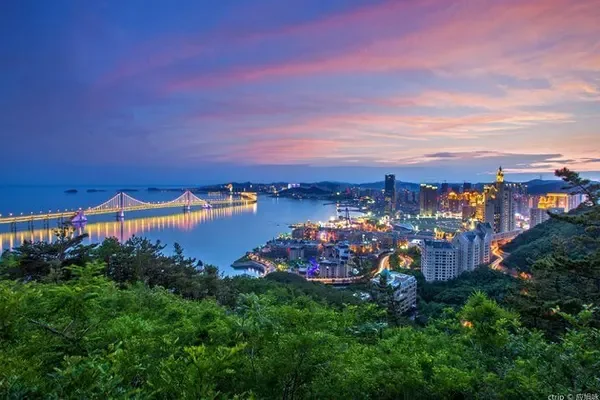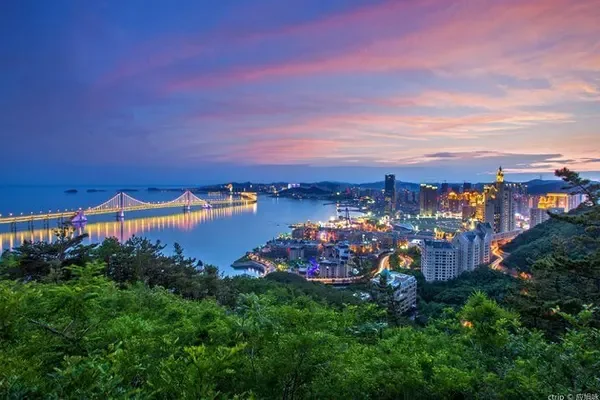devil city
The Gobi of the Western Regions is in turmoil,
The sky is covered with yellow sand and the sun is covered.
The majestic ghost town stands tall,
A drop in the ocean.
Origin of Devil City
A naturally formed devil city is even more majestic than the old city of Gaochang from a distance, which makes people sigh that the uncanny workmanship of nature is beyond the reach of human beings. The philosopher said: The objects we see are the objects of the sensory world, and all their properties are the properties of the sensory world. All our descriptions are of the world of human representation. To a large extent, art helps us better express the virtual reality world in the process of describing the world. If the art we see is a wonderful elaboration of the universe, then this Devil City should be the most beautiful art of nature I have ever seen.
The discoverer of Lop Nur, the Swedish explorer Sven Hedin, first discovered the Yardang landform during his investigation in Lop Nur, Xinjiang, China from 1899 to 1903. Therefore, according to the local Uighur language, it is called Yardang (the original meaning is "hill with steep walls"), and the definition of Yardang landform is proposed, that is, Yardang landform is a landform of various shapes formed by water erosion first and then wind erosion.
Hami's Devil City
Hami Devil City is located in the south of Wubao Township, Hami City, 20Km away from Wubao Township, and about 100Km away from Hami City. Because of its mystery, people who are not familiar with the terrain may lose their way in the event of a storm. From the camel's peak outside Yandun, through Yamansu Iron Mine, Dananhu Coal Mine, to Shisanjianfang of Shaer Lake in Wubao, it is about 400 kilometers long and 5-10 kilometers wide. It belongs to a special geographical environment in Hami. It is formed naturally after a long period of wind erosion.
In Devil City, you can see landscapes that resemble castles, palaces, pagodas, steles, figures, and animals in different shapes, dazzling cliffs, colorful agates mixed with rocks, petrified wood everywhere, and fresh branches and leaves. Plant fossils, occasionally small round stones like dinosaur egg fossils, bird fossils can be obtained, and when night falls, you can sometimes hear the heinous screams of howling ghosts and wolves. There are also many Yadan devil cities in Qinghai, Gansu, but among the many devil cities, I really like Wubao Devil City, because there are not many human traces, which can be seen from the safety reminder sheet when entering the park. Occasionally, there are many small roads and climbable Yadans that can be driven into the interior of Yadan Devil City. The last time I drove there, I bravely tried to fall into a sandpit and couldn’t extricate myself. A lot of the beauty of wild nature in the past.
The beauty of Devil City is not in the sky,
But care about the beauty of the sunset.
The ghost of the Devil City does not lie in the mountains and hills,
But care about howling ghosts and wolves at midnight.
Beauty lies in odd shapes,
Fascinating in the setting sun,
Surprised by a drop in the ocean,
Fear and midnight ghost howls.
Yadan of Southern Eight Immortals in Qinghai
Nanbaxian Yadan Devil City is located on the northwest edge of the Qaidam Basin, belonging to the Haizang Autonomous Prefecture of Qinghai Province, with a total area of 21,000 square kilometers and is the largest Yadan landform in China. Nanbaxian is located on the northern edge of the Qaidam Basin on the Qingzang Plateau. It is a landform combination of intermittently extending elongated mounds and concave grooves, which is called Yadan landform by geologists. Nearby are the Danxia landforms of different sizes and depths, and in the distance are the Qilian Mountains, which are rolling and rolling for thousands of miles. As long as it is sunny, the mountains will always be surrounded by layers of white clouds. Such a clear picture jumps into view. , Let people lament the magic of nature's creations.
It is formed by the erosion of the west wind due to the condensation of salt water and sand. This Yadan landform was formed 75 million years ago. The sediments at the bottom of the lake were raised by crustal movement, eroded and sculpted by the prevailing wind, forming a spectacle of warships or giant whales arranged in parallel. Legend has it that eight geologists in the south were lost in the search for oil. Later generations called this place "Southern Eight Immortals" in memory of them. Nanbaxian is called "Devil City" and "Ecstasy Array" because of the high content of rock and iron in the area and the strong geomagnetic field, which often makes the compass fail, and the wind howls at night and makes strange noises.
Basically, you can drive to Shuishang Yadan for a few kilometers along the road to enjoy and climb for free. The obvious difference from Yadan in Xinjiang is that the Gobi is full of saline-alkali land. It can be said that there is no grass and it is extremely hard. When entering the Nanbaxian Yadan group, the mobile phone will naturally lose signal. I have tried to go deep, and I can leave some marks along the way. It is still extremely difficult to identify the route, so if you do not have professional equipment and personnel, it is recommended to thousand Don't try to go into the depths by yourself. The effect of geomagnetism cannot be recognized by human beings with senses and simple mobile phone devices.



Water Devil City-Wusut Water Yardang Geopark
Water Yardang Devil City is located in the northwest of the Qaidam Basin in Qinghai. After tens of millions of years of geological movement and changes in time and space, it has bred and formed the largest and most spectacular Yardang community in the world, covering an area of about 21,000 square kilometers. Distributed in the Southern Baxian and Russian Boliang areas. Wusu Te Yadan is located in the Yadan Group of the Southern Eight Immortals. The Yadan mounds in the area are 10-25 meters high, and the highest can reach 50 meters. Yardangs are spread all over the lake, which is the earliest water Yardang landscape discovered in the world.
Because the Qaidam Basin is the most widely distributed area of Yadan landforms in my country, and the Yadan landforms on the water as the core hinterland of the Qaidam Basin, because of its low-lying terrain, the southern slope of the Kunlun Mountains has melted ice and snow for nearly ten thousand years. The Yardang landform landscape submerged here forms the current "Water Devil City".
From the perspective of natural science, the Yadan landform on the water is actually a very natural and simple phenomenon - it is the lake formed by the submerged Yadan landform! But in real life, as a lake full of spirituality in people's minds, it is actually "mixed" with the "evil, dry, and bad" Yadan, breaking through people's usual inherent thinking mode and traditional concepts, so the water in the water The concept of Yadan is particularly eye-catching from a psychological point of view.

Karamay Devil City
Uerhe Devil City, also known as Uerhe Wind City, is located in the Uerhe Mining Area in the lower reaches of the Jiamu River on the northwestern edge of the Junggar Basin in the Xinjiang Uygur Autonomous Region. It is 100 kilometers southwest of Karamay. People call this "Sulumu Hake". The Uyghurs call it "Sayita Kersi", which means Devil City. In fact, this is a typical Yadan landform area. "Yadan" means "steep hill" in Uighur. The Yadan landform is named after the most typical Yadan area near Lop Nur in the Tarim Basin of Xinjiang.
Urho Devil City is a typical Yadan landform. During the Cretaceous period more than 100 million years ago, it used to be a freshwater lake inhabited by many ancient animals. Crustal changes and drought and strong winds finally created the style of today's Devil City.
If you think this is the mystery of World Devil City, then you are thinking too simply. To uncover the truth of Devil City, you have to wait until night falls—when the sun goes down, the sun slantly shines on the rocks, the light and shadow intersect, and the pavilions, towers, pavilions, people, animals, and birds seem to suddenly come alive, and the maze world suddenly appears. With vitality, the whole rock group is filled with magical and mysterious atmosphere.
Epilogue:
Happy life without wine
Looking up to the sky and screaming between heaven and earth
Xinjiang Miscellaneous Notes-Devil City
Attachment: Yardang landforms are mainly distributed in areas of our country
Middle and late Pleistocene fluvial-lacustrine mudstone, sandy mudstone, and sandstone in Longcheng Yadan, the lower reaches of the Kongque River in Lop Nur, Xinjiang, China
Middle-late Pleistocene lacustrine facies light brown mudstone rich in gypsum layers in the Yadan ancient city of Loulan in the lower reaches of the Kongque River in Lop Nur, Xinjiang, China
Middle and late Pleistocene lacustrine gray-white sand-mudstone interbedded with gypsum layer in Bailongdui Yadan landform in Lop Nur, Xinjiang, China
Interbedded light brown mudstone and sandstone of middle and late Pleistocene fluvial-lacustrine facies in Dunhuang Yadan National Geopark (Sanlong Shayadan Landform), China
Interbedded gray-white mudstone and sandstone of middle and late Pleistocene fluvial-lacustrine facies in Yadan, Aqike Valley, Xinjiang, China
Grey-green, brown-red mudstone, sandy mudstone, sandstone, conglomerate of Mesozoic Cretaceous Tugulu Group in Devil City, Uerhe, Xinjiang, China
Jurassic and Cretaceous Continental Stratigraphy in Devil City, Qitai, Xinjiang, China
Middle-Upper Jurassic Shishugou Group mudstone interbedded with sandstone and pebble-bearing sandstone in Yadan Landform, Wucai Bay, Xinjiang, China
Paleogene-Neogene pink, gray-white sandstone, mudstone and glutenite horizontal strata in Wubao Devil City, Hami, Xinjiang, China
Cretaceous, Jurassic and Paleogene-Neogene white and red sandstone, mudstone and glutenite formations in Shisanjianfang, Hami, Xinjiang, China
Fluvial deposits composed of Late Pleistocene clay and loam in Bulongjiyadan, Guazhou, Gansu, China
Fluvial deposits composed of late Pleistocene clay and loam in the ancient city of Yadan, Qiaowan, Guazhou, Gansu, China
Fluvial deposits composed of late Pleistocene clay and loam in the Shuangta Reservoir, Guazhou, Gansu, China
Late Pleistocene diluvial deposits in the south of Suoyang City, Guazhou, Gansu, China
Holocene alluvial deposits in Baiqibao, Guazhou, Gansu, China
Northwest Tertiary mudstone, siltstone and sandstone in Qaidam Basin, China (Eboliang, Yiliping, Nanbaxian)
Quaternary alluvial deposits and aeolian deposits in the Houshan area of Wumeng, Inner Mongolia, China
Aeolian sediments (laohongsha) in the mid-to-late Late Pleistocene of Jinghai Senior Garden, Huilai, Guangdong, China

